How the Govt of India is relying on cloud technology to reach the masses
In this technology-driven era, we find cloud computing evolving fastly and penetrating rapidly in our lives. With the potential to transform the way IT is consumed and managed, cloud technology is gaining momentum in different industrial sectors. The Indian cloud computing market, currently at $2.2 billion, is projected to grow to $4 billion by the year 2020. The increasing growth of cloud-native services and rising acceptance of cloud-based environments are driving the industries away from traditional data centres (DCs) to the cloud environments. According to a report, India meets minimum Internet infrastructural standards essential for basic cloud services, affecting the network speed and latency.

Acutely aware of these challenges, the government of India implemented its ambitious Digital India program to address the infrastructural weaknesses that will lead to significant improvements. The Indian government planned to deploy cloud technology with an aim to increase agility, share information, eliminate redundancy and optimize communication technology at economical costs.
Here are the initiatives taken by the government of India to encourage cloud technology acceptance:
1. E-Gram Panchayat
The majority of the Indian population lives in villages, and the Panchayats represent the face of governance for these villagers. To improve the quality of governance, the Indian government initiated an e-governance scheme known as ePanchayat to simplify and enhance internal government operations. The module was constructed in 4 phases of e-governance.

Four Phases of e-Governance
I. Information- In this phase, the government can disseminate the relevant information to the people through electronic means like the internet.
II. Interaction- This phase aims to ease the interaction and reduce the communication gap between government officials and society.
III. Transaction- In this phase, complete transactions can be done without the need to visit the office, increasing customer value.
IV. Transformation- The ultimate goal of this phase is to provide all the services at a single counter.
The e-Gram Panchayat module covers 34 areas in terms of different modules like gram panchayat administration, irrigation and water conservation, dairy and animal husbandry, fisheries, social forestry, elections, small-scale industries, housing, water, fuel, road and bridges, electric supply and so on.
Cloud Model
The cloud model of e-Gram Panchayat depicts a high-level architecture intended to facilitate internal government operations.
Five major cloud models for ePanchayat:
I. Cloud Consumer
II. Cloud Provider
III. Cloud Carrier
IV. Cloud Auditor
V. Cloud Broker

The cloud consumer may request the services from a cloud provider directly or through a cloud broker. A cloud auditor conducts self-governing audits and contacts the others to collect the required information.
2. Indian Railways on Cloud
Governed by Central Railway Ministry of India, the Indian railway network is the largest rail network in Asia and second-largest rail network in the world. A research carried by the railway ministry says out of 17 million passengers every day, only 1 million passengers carry confirmed rail tickets. This results in substantial monetary loss. To avoid loss, the Indian government decided to implement cloud technology for Indian railways. Today, the central government maintains the railway data on the cloud.
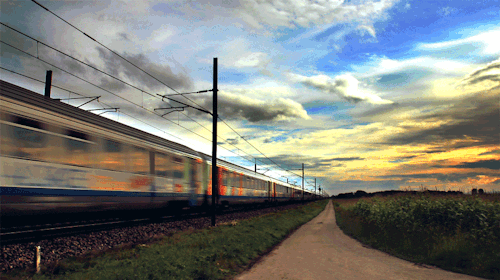
Cloud Service Models
I. Infrastructure-as-a-Service (IaaS) – Infrastructure-as-a-Service model enables managing applications, data, operating system, middleware and runtime environment with ease. The model is a pay-per-use model, which means pay only for the storage you use. It helps to fulfil the Central Railways current needs.
II. Platform-as-a-Service (PaaS) – The Central railway might find PaaS beneficial to eliminate the cost for maintenance of hardware since there is no need to have manual maintenance of these systems. It enables a scalable processing centre that can be used depending on the needs of Indian railways.
III. Software-as-a-Service (SaaS) – The central railways can use this layer to run programs in the cloud. Since everyone will use the software, the users will be assured with compatibility and ease of collaboration. Also, there is no need to pay extra licensing fees.
Improvements in Railways using cloud
Cloud computing has led to vast advancements in the railway network. The techniques like Tickets with unique QR (Quick Response) – Code and ticket checking with QR Scanner, Wi-Fi enabled GPS devices set up on each train are managed using cloud storage.
QR-Scanner- Implementing QR-Scanner on the entrance of each station will help to keep a count of passengers entering a particular train. Empty seat status is getting updated on the cloud; enabling TTE (Travelling Ticket Examiner) to allot vacant seats to passengers using first come first serve model.
GPS Device- GPS device introduced in every train using Wi-Fi devices helps to find the exact position of the train, speed and duration of time left. The data is stored in the cloud and is accessible to us, enabling easy tracking of a train. The data coming from GPS is updated to cloud storage at regular intervals.
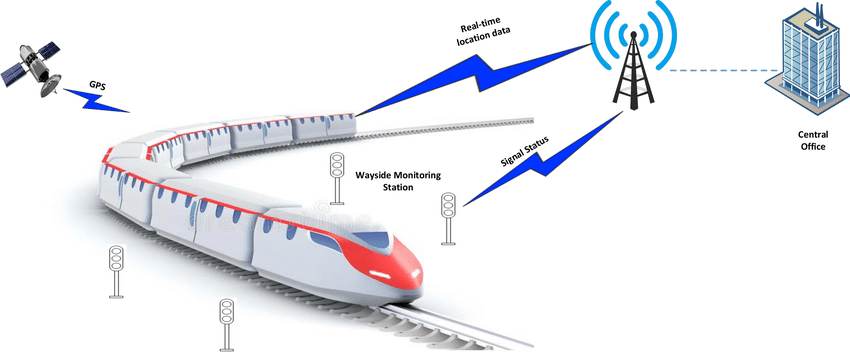
3. Kisan Suvidha
The Indian government came up with portal Kisan Suvidha to help farmers with the relevant information instantly. It delivers farmers with detailed knowledge on weather, market prices, seeds, fertilizers, pesticides, agriculture machinery, dealers, agro advisories, plant protection and IPM practices. It notifies them with extreme weather conditions and the changing market price.

How is cloud computing serving Indian farmers?
I. Crop related information: The information related to crops grown in different regions is captured and stored. This helps the farmers across the nation to make the right decisions.
II. Weather information: It stores the region-specific weather data. It also notifies the weather for a specific duration. It helps the farmers to select crops depending on the weather conditions.
III. Soil Information: Soil information plays a crucial role in farming. This section provides soil information like nature, crops to be cultivated, etc. across the country. It also notifies the past, current and future trends in soil.
IV. Expert Consultation: It offers expertized solutions to the frequently experienced problems by farmers. It solves the queries quickly, providing an immediate response.
The cloud Agro System Model:
In this cloud-based agro system, the complete information is stored on a cloud. The data traffic management is responsible for the smooth flow of incoming traffic, i.e. queries and outgoing traffic, i.e. solutions. Also, the cloud system has made communication between farmers and researchers much faster and easier. Since the data is stored in the cloud, enhanced security is offered, which the service providers maintain centrally.
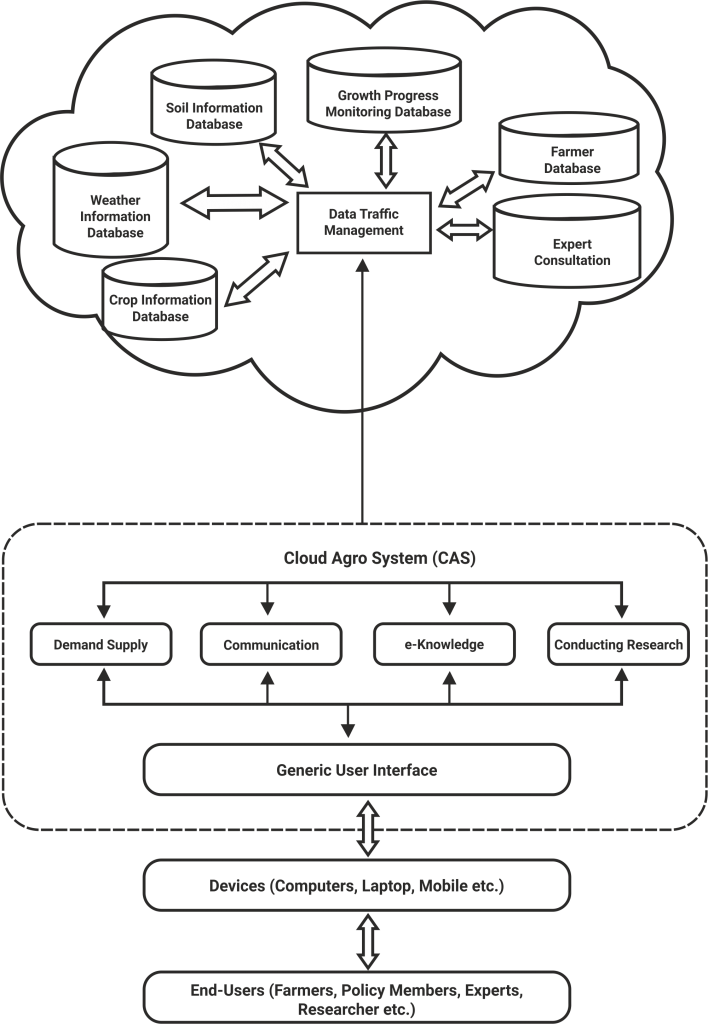
4. DigiLocker
DigiLocker is the public cloud-based storage introduced by the Indian government for the citizens of India. It is much more than an online drive where you upload your documents to be accessed depending on your convenience. The documents are digitally verified and signed by the government of India in a few seconds with an authentic seal of DigiLocker verification.
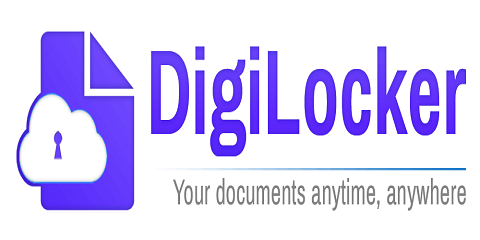
How did cloud-based DigiLocker prove to be helpful to the citizens of India?
I. It has eliminated the need to maintain hardcopy of the government-issued documents.
II. It has eliminated the need to produce the government-issued documents in the printed format while applying for services.
III. Cloud storage has enabled secure and authentic access to government-issued documents.
IV. The paperless transactions have reduced the cost, time and administrative burden.
V. The cloud-based storage enabled accessing the documents from anywhere and at any time in a standard format.
VI. The cloud architecture helps to digitize the old documents that are not machine-readable and structure future documents.
5 eHospital
eHospital is the cloud-based healthcare projected implemented by the government of India to ease the process of healthcare management. The system was designed to speed up services like online registration, payment of fees and appointment, online diagnostic reports, checking on the availability of blood online, etc. This hospital model assigns a unique identification number to every patient at the time of registration. The medical history of a particular patient can be accessed using the number.

Importance of cloud to eHospital:
I. Cloud technology offers to store medical records in multiple virtual platforms like infrastructure as a service (IaaS), software as a service (SaaS) and platform as a service (PaaS).
II. The cloud-based platform has reduced the IT cost of healthcare and eased the task to store a massive amount of healthcare data.
III. eHospital leverages the technology enabling the doctors to access the medical records from anywhere and at any time.
IV. The full range of clinical, administrative and lab capabilities are linked by a single data repository, which prevents carbon emission by on-premise servers.
V. Integrated inventory management eases the tracking of hospital stocks right from medicines to equipment, minimizing the loss incurred due to misplacements.
Conclusion Cloud technology has gained popularity not only in India but also across the world. The cloud-based digital projects introduced by the government of India under the Digital India mission have encouraged the organizations to migrate their business to cloud. The cloud technology is transforming the county’s BFSI sector, government organizations, healthcare industry, farming, etc. It can clearly be stated that we are close to achieving digital India mission.
- Digital Transformation Paves the Way for the Finance Industry - July 29, 2021
- Embracing Change – How Banks are Adopting Digital Innovation - April 19, 2021
- How the Indian Education Sector is Embracing Cloud Computing - November 13, 2020
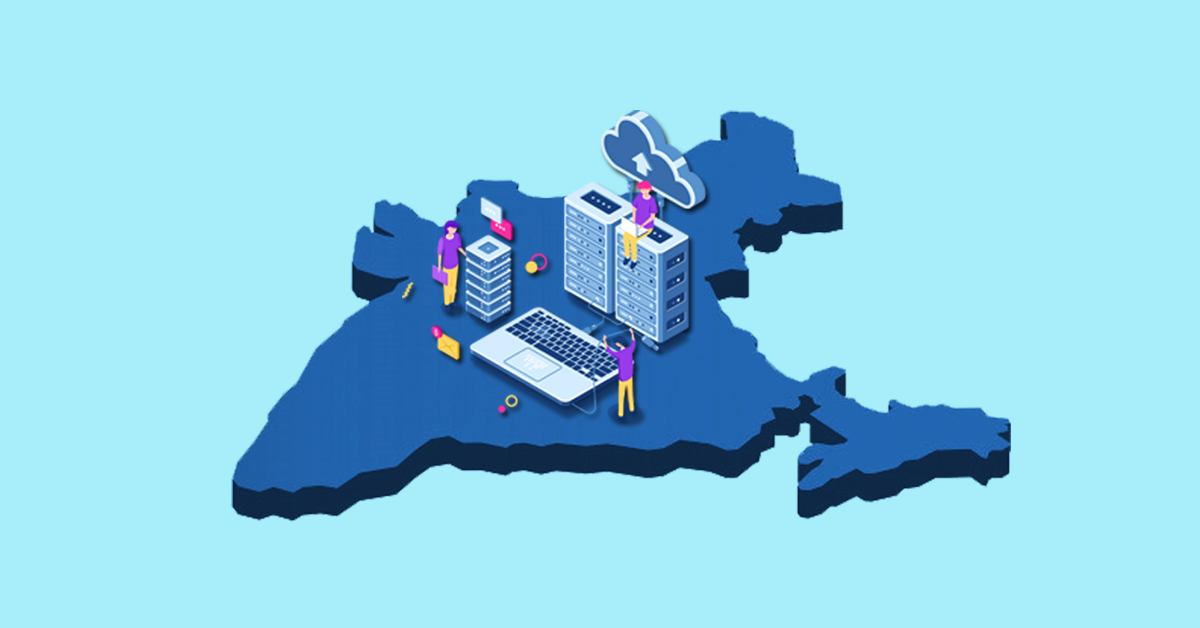
Hi Priyanka,
This is a very interesting article that you have written. Very informative and gives hope that the government is leveraging technology for growth and development. Great work.